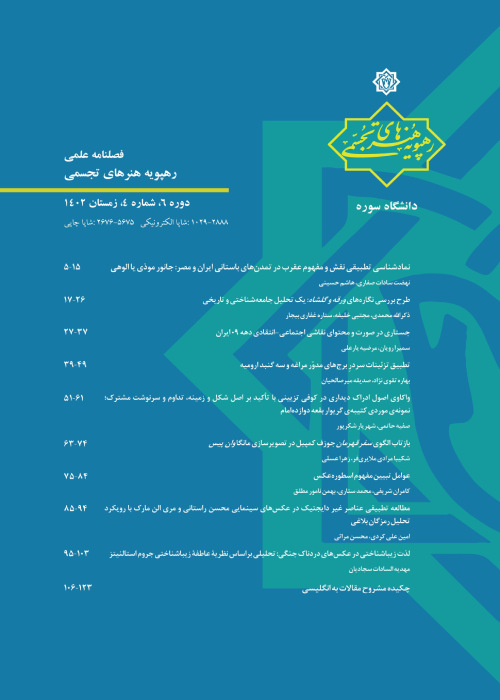Comparative Analysis of anthropological photographs of Antion Sevrioguin and N. Kasraeian from pos t-colonial perspective
A tight link between photography, anthropology and modernity is undeniable. Fixed time and space photography allowed scientis ts to do something that was impossible before. The emergence of the camera and the need for anthropologis ts to have a more accurate record of society and its intended culture has made photography an integral part of anthropology from the outset. But one has to ask what it was in photography that connected him to the world of anthropology and why anthropologis ts should take advantage of this technology. The photography appeared in the nineteenth-century positivis t era, An era in which Anthropologis ts following the theory of evolution and the emergence of colonial powers for objective and realis tic recording of people of the Oriental communities, needed a proper ins trument and camera because of its realis tic and impartial nature has served in the hands of the colonial powers In their path to political hegemony. With the early introduction of photography in Ira, Antoin Sevruguin in Qajar era Looking at the popularity of European touris ts and satisfying the same desire that led to the formation of anthropological science, he portrayed various manifes tations of people’s lives. But over the years, with the change of government from Qajar to Pahlavi, during the second half of the nineteenth and twentieth centuries, Iran experienced a transition from traditional culture to modern culture and society. This implies a paradigm shift from tradition to modernity, both in its impact on anthropology and on image anthropology, which is directly related to science and has opened a new chapter in ethnographic photography in Iran. A season in which new ethnographic imagery was taken from a different angle from the pas t and based on completely different goals. In pos t Islamic revolution of Iran N. kasraeian have been documented the Iranian people. By comparative s tudying of anthropological photographs of these two photographers with anthropological approach and with two different perspectives, orientalis t and indigenous, both of which are related to pos t-colonial s tudies, this ques tion is raised that how Orientalis t and Indigenous discourses have been represented in the Works of these photographers.We used descriptive and comparative analysis to answer this ques tion. The choice of comparative analysis method in this s tudy is due to overlapping contents with literature review of this research: “the issue of culture”. In this regard we have analyzed the works of the photographers in three categories of subjects: women, ritual and work. We have realized that there are some differences and similarities between the works of the photographers and their works are in contras t to the European view toward orient, European outer look at phenomena. We know this outer look as exotism. Adding “ism” to the end of the word Separates it from ordinary everyday speech and transfer it to the realm of discourse. The research asserts that exotism is not jus t a concept but a cultural flow, a kind of looking and special process that brings special discourses with itself too.


